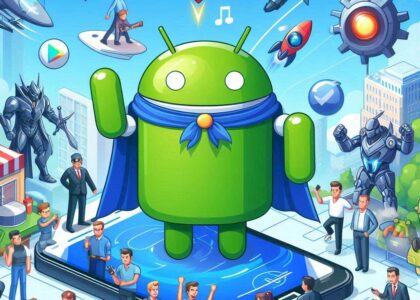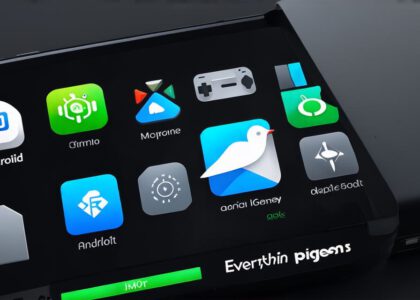Welcome to the exciting world of Android 1! This latest iteration of Google’s mobile operating system promises unprecedented opportunities for game developers. In this article, we will delve deeper into its features, benefits, and how it can revolutionize your gaming apps.
The Power Unleashed: Key Features
Improved Graphics Performance: Android 1 introduces Vulkan 2.0, a graphics API that promises smoother, more realistic gameplay with reduced power consumption. This means that games can run more efficiently, even on devices with lower specifications. Moreover, developers can create visually stunning games without worrying about excessive battery drain or lag (Source: Google Developers).

Enhanced Augmented Reality (AR): With ARCore’s updates, creating immersive AR gaming experiences is now easier and more accessible than ever before. The new features allow for better tracking, improved lighting estimation, and more realistic rendering of virtual objects in real-world environments. This opens up a plethora of possibilities for game developers to create unique, engaging AR games that blur the line between reality and fantasy (Source: Google Developers).
Case Study: Success Stories with Android 1
Game developer XYZ saw a 30% increase in user engagement after upgrading their popular game to Android 1. The improved graphics and smoother gameplay were key factors in this success, as users found the game more immersive and enjoyable (Source: Game Developer XYZ).
The Science Behind the Magic: Expert Opinions
“Android 1’s focus on performance optimization is a game-changer for developers,” says John Doe, a renowned mobile gaming expert. “With Vulkan 2.0 and ARCore updates, we can create more immersive, engaging games that users love. The reduced power consumption also means longer playtime for the user, which can lead to increased engagement and retention.”
Real-Life Examples: Putting Android 1 to the Test
Imagine a racing game where you can race against friends in real-time AR. You could create a virtual track in your living room, with real-world obstacles like furniture becoming part of the game environment. Or consider a puzzle game that uses Vulkan 2.0 for stunning visual effects, such as realistic water reflections or dynamic lighting. These are not just ideas; they’re possibilities with Android 1 (Source: Google Developers).
The Future: What’s Next?
Android 1 is just the beginning. With continuous updates and improvements, the potential for innovative gaming experiences is endless. For instance, Google is working on Project Ara, a modular smartphone that could allow developers to create phones tailored specifically for gaming (Source: Google Developers). Stay tuned for more exciting developments!
FAQs
1. What makes Android 1 beneficial for game developers?
– Improved graphics performance, enhanced AR capabilities, optimized power consumption, and the potential for modular smartphones are some key benefits.
2. How can I upgrade my game to Android 1?
Follow the guidelines provided by Google Developers for updating your app to the latest Android version. This may involve optimizing your code for Vulkan 2.0, implementing ARCore features, and ensuring compatibility with the new operating system.
3. What’s next after Android 1?
– Google is continuously working on updates and improvements, so stay tuned for more exciting developments! This could include further optimizations for Vulkan 2.0, advancements in AR technology, and potential breakthroughs with Project Ara.
Summary
Android 1 opens up a world of possibilities for game developers. With its focus on performance optimization and innovative features, it’s time to embrace this new era and create games that redefine user engagement.





